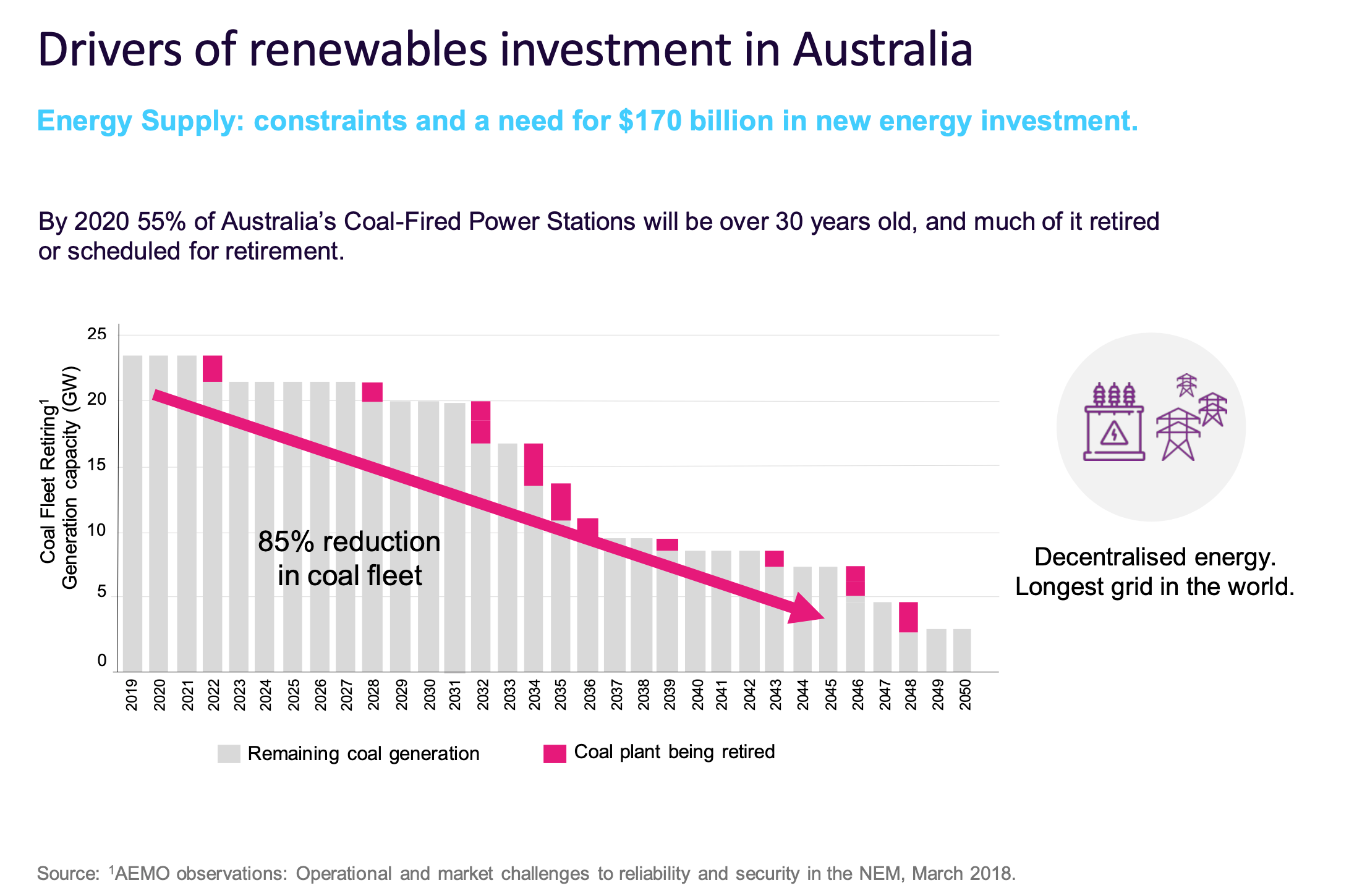The explosive urgency (and opportunity) of Australia’s power shift
Large-scale power cuts caused by ageing coalfired utilities are just one of several reasons why Octopus Investments Australia is prepping its new $100 million fund to launch by the end of this year.
An explosion at the Callide power station in Biloela, Queensland in late May caused the state’s worst power outage in decades, leaving almost 500,000 customers without electricity. While two generation units were repaired last month, one isn’t expected to be back online until mid-2022.
“Coal-fired facilities are doing things they really weren't designed for when they were built 30 years ago, in ramping up and ramping down as more renewables come onto the grid, which is increasing the wear and tear on some of these generators,” said Sam Reynolds, managing director of Octopus Investments Australia during a recent webinar.
The third-largest owner of renewable energy projects in Europe and one of the biggest local players, Octopus owns some 260 renewable energy sites – on behalf of wholesale and institutional investors – in the UK, South Korea and Australia.
Octopus owns Australia’s largest solar plant, a 333MW facility in Darlington Point, NSW. This solar farm in the state’s Riverina district is the seed asset for the OREO fund, which will target a yield of between 4% and 5% and a 7.5% return net of fees.
The writing has been on the wall for local fossil fuel generation for years now, but it’s the pace of the shift away from coal- and gas-fired utilities that has surprised more recently, said Reynolds.
“The transition is happening much faster than anyone forecast and this is what creates the massive opportunity for investors, as renewable energy is required to replace coal as the number one generator in the market,” he said.
On a global basis, the sector requires around $1 trillion of new investment over the next decade, with around 80% of pension funds Octopus surveyed recently indicating they’re ramping up renewables exposure. And on the home front, Australia needs around $170 billion of new energy investment over the next 10 years – highlighted by the fact that more than half of our coal-fired power stations are more than 30 years old.

“Nobody wants a power station in their backyard”
Given the lengthy process of environmental impact assessments and community consultations even before a shovel is lifted, Reynolds believes the outlook for new coal-fired power stations to meet rising energy demand is bleak.
“You’re looking at around 15-20 years before you have a new coal-fired power station up and running and connected to the grid,” he said.
“When you think about the technological developments that we’ve had in the energy space over the last 20 years and think about what will happen in the next 20, that coal-fired power station that people are thinking about will be a white elephant, it won’t be viable and won’t be able to compete.”
Insurers, investors bailing out
This latest disaster highlights another looming problem for coal-fired generation. The last locally-based insurer that supported the sector, Suncorp Group (ASX: SUN), last year said it will no longer cover such facilities from 2030 onwards.
“And none of the big four banks will invest in a power station either, having all said they’ll be removing them from the portfolio. Which leaves the Australian Government as the only true backer of coal in Australia,” Reynolds said.
“And you’ve also got an Australian population that is getting tired of paying high energy prices. Australia should have some of the cheapest power prices, with great wind and solar resources, and the government just needs to focus on getting the grid ready to accept large-scale renewables in the future.”
Of the 19 existing coal power stations in Australia, he forecasts that all will be coming offline in the next 10 or 20 years.
Where do renewables fit?
Targeting a stable yield of between 5% and 7%, OREO would typically fit in the defensive component of investment portfolios, and for a couple of reasons.
Firstly, renewable energy isn’t correlated to financial markets, “It makes money when the sun is shining and the wind is blowing,” said James Stewart, Octopus Investment Australia’s business development manager.
And renewables revenue also comes from two different sources, selling directly to electricity retailers via power purchase agreements. OREO’s seed asset, the Darlington Point solar farm, has presold 55% of its generation to retailer Delta Energy for 11 years.
“You can think of this as essentially a futures contract, which locks in that price of energy for 55% of the electrons that are being exported and provides that surety of income to investors,” Stewart said.
The fund will also provide exposure to wholesale electricity prices. This means that when spikes of power demand boost energy prices – such as in summer when air conditioner usage peaks – investors will still get exposure to that higher price.
“And another thing you want to have when investing in renewable energy is a nice diversification across wind, solar, storage and also geographic diversification, which OREO will eventually provide,” said Stewart.
The Octopus Renewable Energy Opportunities fund will launch as an open-ended vehicle providing quarterly liquidity – something not commonly available within infrastructure funds. “We know that liquidity is extremely important when gaining access to an infrastructure asset class,” Stewart said.
Leading Australia's drive towards a cleaner future
Octopus invests directly into the Australian renewable energy sector, helping to provide the innovative solutions it needs during its transition to a clean energy future. Visit their website for more information
3 topics
1 stock mentioned
2 contributors mentioned

